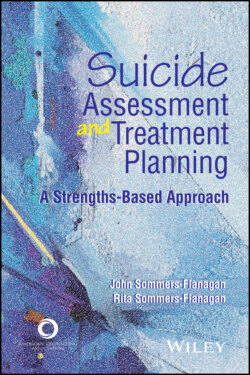Читать книгу Suicide Assessment and Treatment Planning - John Sommers-Flanagan - Страница 68
Practitioner Guidance and Key Points to Remember
ОглавлениеCore suicide competencies, as described by Cramer and his colleagues (2013), include the following:
1 Be aware of and manage your attitude and reactions to suicide.
2 Develop and maintain a collaborative, empathic stance with clients.
3 Know and elicit evidence-based risk and protective factors.
4 Focus on current plan and intent of suicidal ideation.
5 Determine the level of risk.
6 Develop and enact a collaborative evidence-based treatment plan.
7 Notify and involve other persons.
8 Document risk assessment, the treatment plan, and the rationale for clinical decisions.
9 Know the law concerning suicide.
10 Engage in debriefing and self-care.
Along with suicide-related competencies, counselors also need to be well versed in ethical principles and practices associated with suicide assessment and treatment. In addition to knowing your agency’s or school’s policy and procedures on suicide, you must attend to key ethical issues, including (a) informed consent, (b) confidentiality and its limits, (c) social media policies, and (d) emergency procedures. Several topics specific to online or distance counseling platforms were also discussed in this chapter. Documenting, maintaining professional boundaries, dealing with client or student death by suicide, and engaging in postvention practices are part of functioning as an ethical professional.
